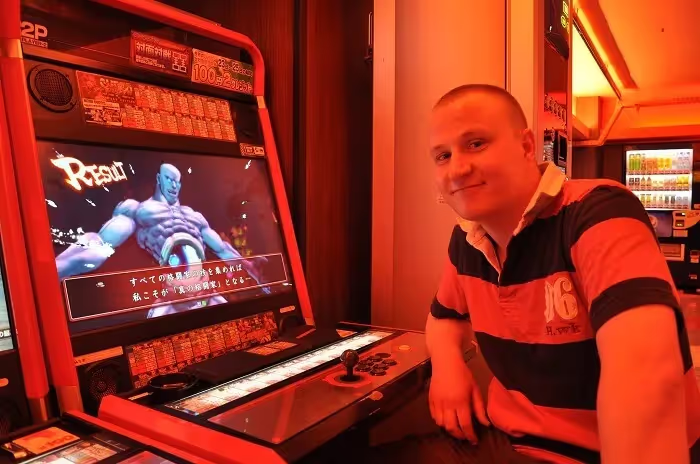Cheery getaway adventures where you farm and relax in sunny environs are quite popular: Animal Crossing and Stardew Valley being among the most prominent. Going into Summer in Mara, however, I wasn’t sure what to expect. It’s a title that had me hating it at the beginning, loving it in the middle, then hating it again at the end — it’s a solid but bland game that has some glaring flaws, especially in the fact that it doesn’t actually teach you how to play.
An Island Getaway
You play as Koa, a little girl, and after a short cutscene setting up your strange origins story, you’re dumped onto the roof of a small house on a small island. You quickly find out that there is no tutorial when a blue anthropomorphic woman named Yaya sends you on a mission to collect oranges — only she doesn’t tell you where or how. After you work out that you have to shake trees like in Animal Crossing, you return to her. She then gives you a tool and asks you to plant carrot seeds. It is never explained how to perform any of these actions or navigate menus. You’re not even told how to swap tools. You continue following Yaya around, doing what she tells you in this pseudo-tutorial. Every time you complete a task, she moves somewhere else inexplicably, with no indication where — and, of course, you were never told how to use the map.

For example, you’re told to “Collect fuel from the Guardian’s Door,” but there is zero indication of where to go; no markers, no map locations. Thankfully, Yaya soon shoves off, leaving you to fend for yourself. When you are told what certain controller buttons do, it’s not always right. Evidenced by the fact that on one later occasion you are told, in a rare control overlay displayed on-screen, how to rotate an object that you’re placing on the ground with the incorrect button prompt of ZL instead of L. For an RPG-style experience, this oversight is bewildering, and by far the biggest issue with Summer in Mara.
Travelling the Seas
But it’s not all doom and gloom. Summer in Mara’s biggest plus point is in its lovely graphics and character design. The cutscenes are even better, with hand-drawn art and animation in the style of Studio Ghibli. Art direction is one area where this game absolutely shines. Think The Legend of Zelda: The Wind Waker — bright, fun graphics, with an anime vibe. The world of Mara is one full of interesting characters and creatures, such as the weird frog-person who runs a food stand or the bourgeoise alien dude that lives in a mansion and collects only the finest items. The cutscenes are animated with Studio Ghibli-like quality, too, but it’s a shame that there are only two of these — one at the beginning, and one at the end.
The gameplay is a weird mix of being both great and boring. You start off on your home island, where you have a small house, and an area to grow crops. These crop-growing plots cannot be moved or created like in other similar games, here there are only a couple available early on, but you can clear the tangles and rocks from more of the plots as you upgrade your tools later. Speaking of tools, there is a crafting system: tools, food, mining, metal smelting, these are all in-place and upgradable to different extents. That upgraded hammer? It allows you to mine better materials. That shiny new hoe? Clear more land for crops.
There is a sticking point here, though. You can only craft and cook on your home island. And add to that the fact that you can only see the crafting recipes when you click on your house, where the crafting screen is located, then you can see why this might be annoying. See, Mara is actually an archipelago, and you are given a boat to travel the vast seas and visit its islands.
Fetch Quest — the Game

Not only do you travel around, but every quest you are given is almost exclusively a fetch quest, which you gain on the island of Qalis, close to your home island. That’s where most of the game’s characters live, you see, and they all want you to collect or craft something. To paraphrase: “Koa, I want a delicious omelette, but it needs to have these specific ingredients.” Your aim is to then find either buy some of the ingredients for an expensive price or buy their seeds. However, you need to sail back to your island and check the crafting screen to find out the ingredients you need in most cases. Then, you sail back to Qalis again to buy the needed ingredients and sail back to your island, again — accompanied by a loading every time you hit a new area — plant the seeds, water your crops, sleep to pass the time, then craft the item they want and return.
This is Summer in Mara’s gameplay loop, and its ability to entertain is intrinsically linked to this loop. MMORPG fans might find this compelling, but those expecting the nuance of Stardew Valley will likely be bitterly disappointed. Frankly, it wastes the player’s time. Why is there no compendium telling you what you need to collect before you get back to your island? There are also activities such as fishing and diving, but they are conducted via soulless minigames, and don’t add much, if anything, to the experience.
The thing about the gameplay is that it’s actually very engaging in the mid-section. Once you get over the lack of system explanations (did I mention you have to eat in order to maintain stamina?) and before you are too exhausted by the game’s monotony, Summer in Mara is fun to play. You explore lots of different islands, gathering food and materials, and meet new characters with new quests on Qalis. But over the 25-50ish hours (depending on how many side quests you complete) you spend in Mara, the charm wears off, and you’re left feeling like a robotic husk completing tasks just to see the ending.
Bland, Boring, Pineapples
While there are many islands to visit in Mara, most are either uninhabited or inhabited by NPCs you can’t interact with; the islands are just there for resource pillaging, really. There are, of course, some characters dotted about the seas, but they are not the norm. A pirate, for example, who appears as some kind of squiggle on your mini-map — a squiggle which caused me to run from him for most of the game, not knowing that I should approach him for new quests. The lack of tutorials rears its ugly head again. Eventually, you upgrade your boat, which unlocks islands further and further away, but they just give you access to new items, like pineapples.

All of the quests are connected, and gated off by your access to upgrades and new resources. Those pineapples we just talked about? You need them to make a dish of food for one quest giver, but never does the game tell you that you can’t access them until you upgrade your boat. This led me to wander Mara’s seas in the hope of spawning some pineapples for far too long. And items you need to upgrade things like your boat? It doesn’t tell you that you can only buy them from certain characters. And some quests can’t be continued until other quest lines have been completed, either, but the game never tells you that. You will spend ages pondering why you can’t find mushrooms, until one rainy day when they begin sprouting on your island at random — did the rain cause this? My progress in the story? You’ll never know. This is symbolic of everything in Summer in Mara; if a quest doesn’t make sense, leave it and do something else, lest you drive yourself mad.
The main story straddles fantasy and sci-fi, and it involves working out the who, what, where, when and why of what happened to Yaya — the blue-hued woman from the game’s introduction. You will complete the main story quests alongside side quests, but it’s another area that falls flat. The whole story and premise is a bit clichéd, and the wholesome nature of Koa’s hero’s journey is a bit too vomit-inducing. “If you cut down a tree you must plant another, this is Mara,” Yaya says in one early scene. “Thank you, tree!” Koa exclaims after cutting down trees to build something. The youthful naivete is clearly meant to be charming, but it’s overdone to the point of triteness.
Final Thoughts
Summer in Mara’s main problem lies in the fact that its competition is cult-hit giants like Animal Crossing and Stardew Valley, and it doesn’t do anything that they don’t do, meaning that if you have some money to spend, you will be better served to pick one of those up first. Only if you’re a die-hard fan of idyllic island getaway simulators and you’ve played all of the others to death will this satiate you. The lack of any real explanation of its mechanics and systems brings the whole experience down, and the nice, charming graphics and characters don’t make up for such a fundamental disability. Add to that what becomes a bland and boring gameplay loop, and Summer in Mara struggles to give us any salient reasons why we should play it over other similar and better games. It’s not a terrible experience, but it quickly becomes a boring one, and worse, one that fights you at every stage.
You can subscribe to Jump Chat Roll on your favourite podcast players including:
Let us know in the comments if you enjoyed this podcast, and if there are any topics you'd like to hear us tackle in future episodes!




